When planning out your smart home, there are certain areas where you need to get a good quality gadget you can trust. If your motion sensor or door sensor fails, your hallway light will not turn on. Big deal. But, if your water leak or smoke detector fails, it could cause expensive damage to your home. Or potentially bigger disasters, so let’s not even go there.
In this review, we are going to test the Heiman ZigBee Smoke Sensor and Alarm to see if this is a gadget you can completely trust.
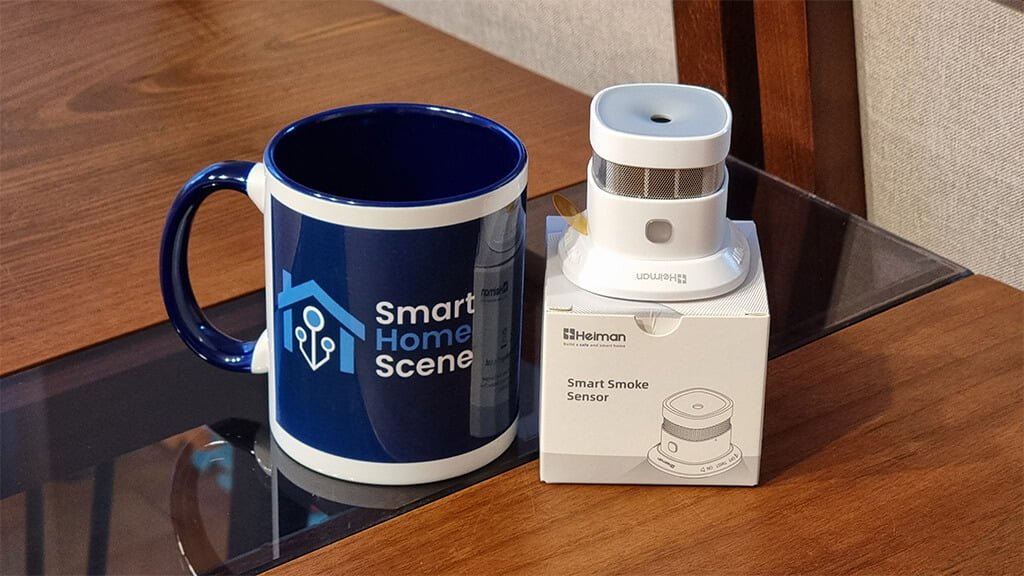
Heiman Smoke Sensor HS1SA-E
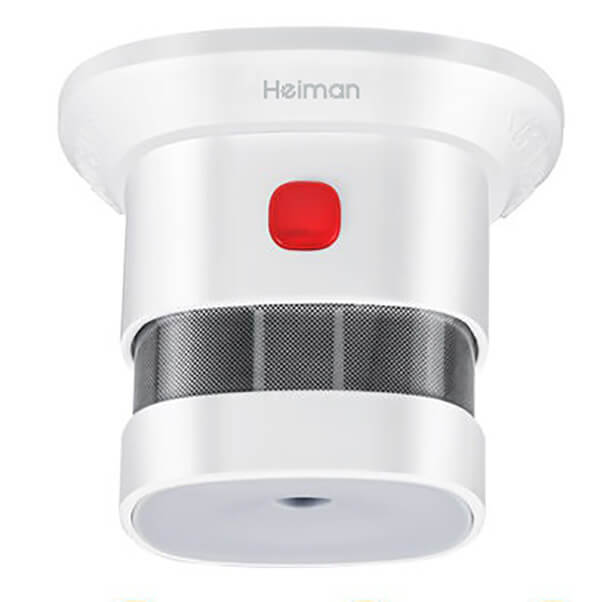
AliExpress (Zigbee)
AliExpress (Zigbee)
AliExpress (Zigbee)
AliExpress (Z-Wave)
AliExpress (Standalone)
N/A
*N/A links will be added when available
**Only the standalone version is available on Amazon stores
Technical Specification
- Model: HS1SA
- Connectivity: ZigBee 3.0
- Power: DC3V (CR123A Lithium Battery)
- Standby Current: <10uA
- Alarm Current: <60mA
- Alarm Sound: <120dB/1m, <90dB/3m
- Working Temperature: -10°C + 50°C
- Working Humidity: up to 95%RH
- Dimensions: 60x43mm with base
- Certification: CE, RoHS, FCC, CCC, EN14604, TÜV
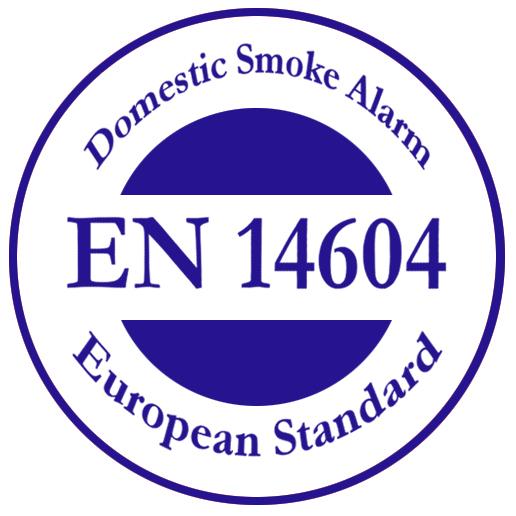
IMPORTANT: Besides CE and RoHS, it’s important to note that this smoke sensor is EN14604 certified. This certificate represents a standard for wireless smoke detectors which is a mandatory requirement for residential protection in the European Union.
When companies apply for this certificate, their product goes through testing in the EU, specifically for several types of fires:
- Pyrolysis wood fire TF2
- Glowing smouldering cotton fire TF3
- Flaming plastics (polyurethane) fire TF4
- Flaming liquid (n-heptane) fire TF5
It’s also important to note, that the sound output is tested and must be within a certain permissible range with an accepted frequency. On top of this, the Heiman Smoke Sensor received the Reddot Design Award in 2017.
Different Models
Heiman produces the same smoke sensor in three different versions:
- Standalone Version:
- HS1SA: No connectivity model, just sounds the siren when smoke is detected
- ZigBee Version:
- HS1SA-M: First Generation, ZigBee
- HS1SA-N: Second Generation, ZigBee
- HS1SA-E: Third Generation, ZigBee 3.0
- Z-Wave Version:
- HS1SA-Z: Z-Wave Compatible and Certified Variant
In this article we are talking about the ZigBee 3.0 version labeled HS1SA-E.
What’s Inside?
The Heiman Smoke Sensor comes packaged with a user manual, a hairpin for resetting the sensor and two plastic dowels with bolts for installation.
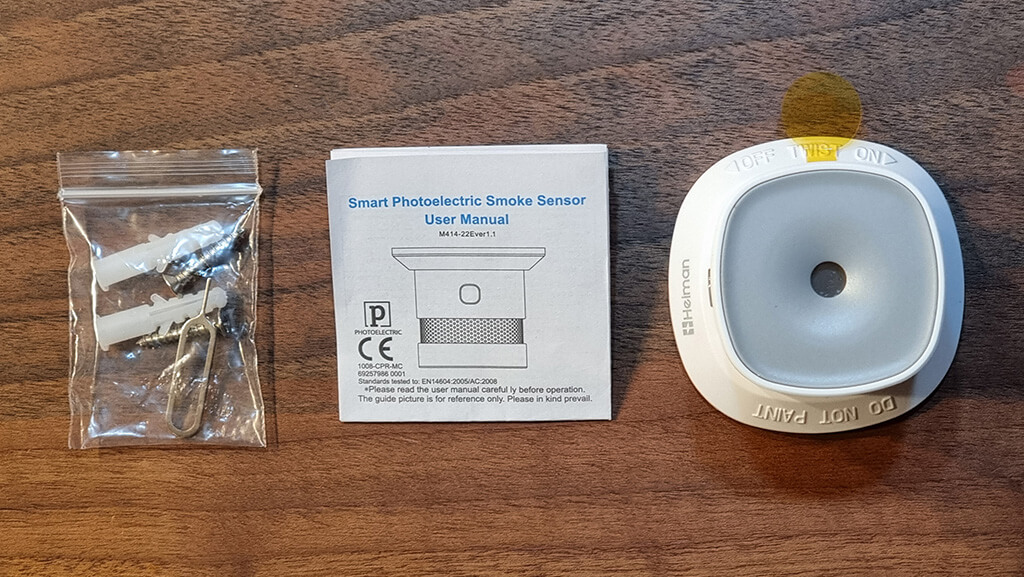
Once you remove the contact film, you can unscrew the mounting cap and remove the battery. We can see it’s a 3V lithium CR123A battery, which can also be replaced with a CR17335.
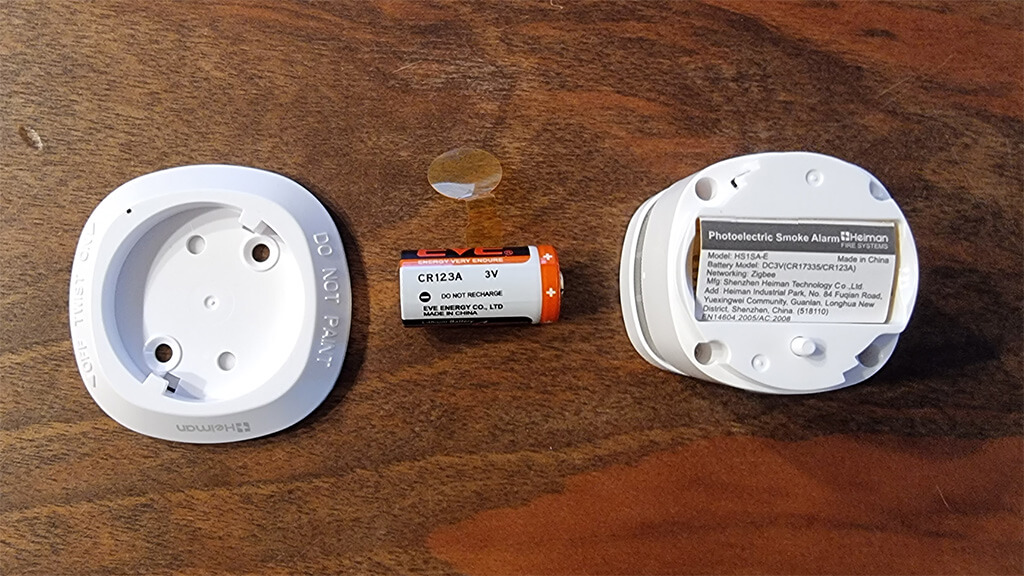
The battery is wrapped in a product information tag, containing some basic characteristics of the sensor on one side.
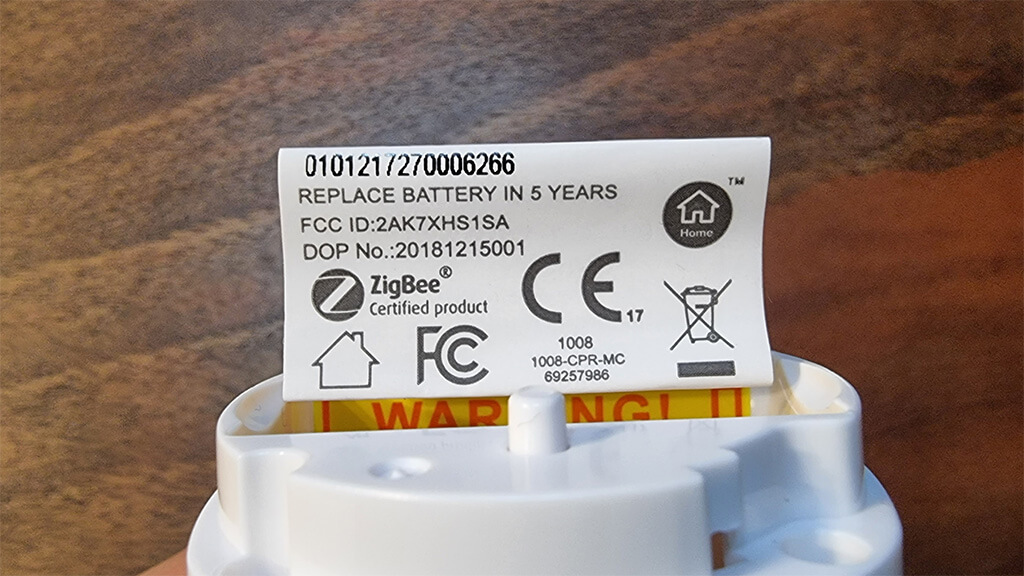
Once untangled, it provides more information about the battery type, and short explanation of the sensor working modes in case you lose the manual. A Battery Removed Warning is placed at the bottom.
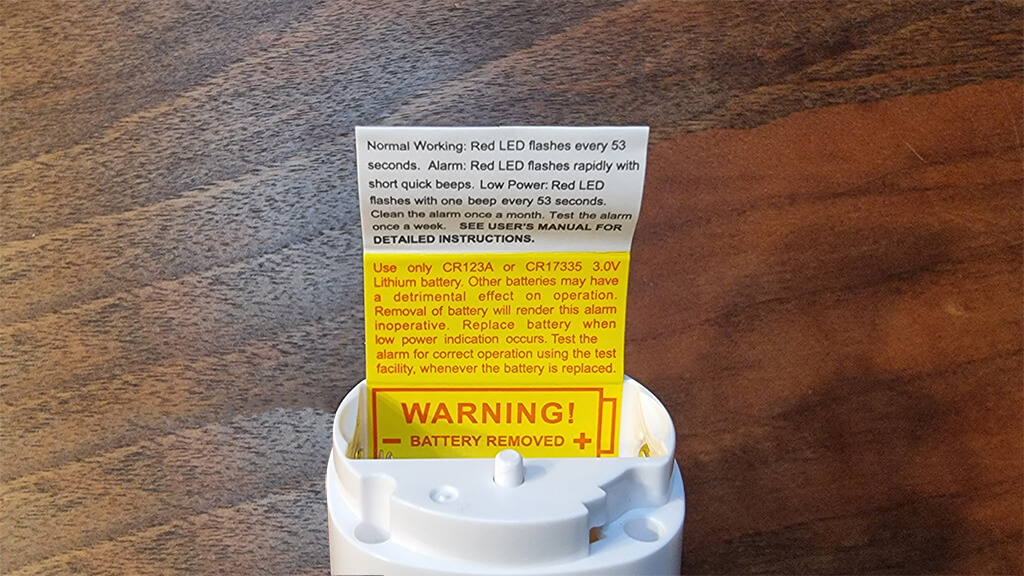
On one side of the sensor, there is a status LED which doubles as a Test and Mute Button. This is an indicator blinking fast when in pairing mode, or blinking once every 59 seconds when in normal operation mode. It’s a dim light, so it won’t be annoying to you. On the back side, there is small hole which accesses the reset button inside using the hair pin.
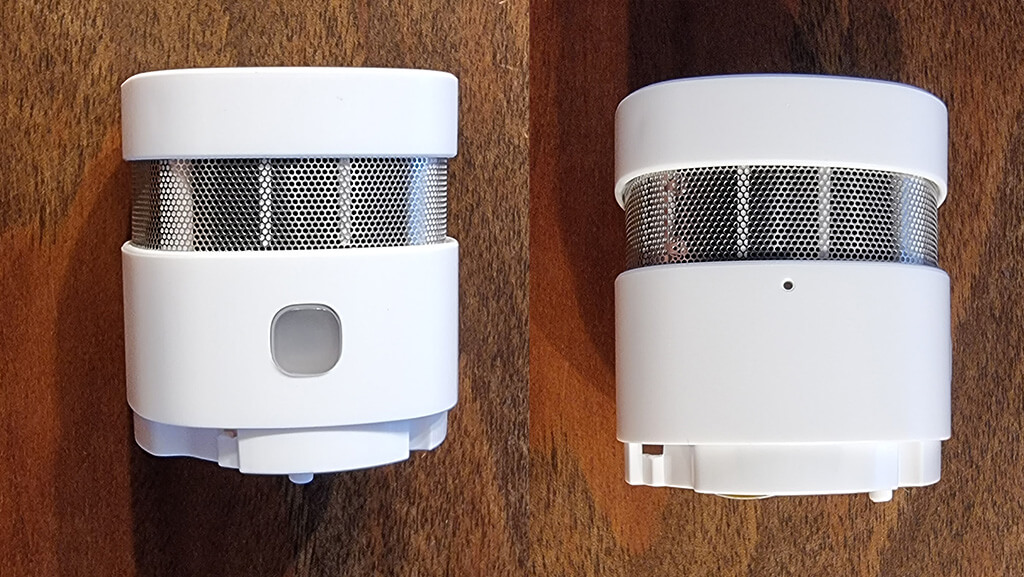
Once disassembled, the components and the main PCB are exposed. I noted the battery holders/contacts are very strong and not easily bendable. Three wires connect the PCB to the siren beneath the sensor.
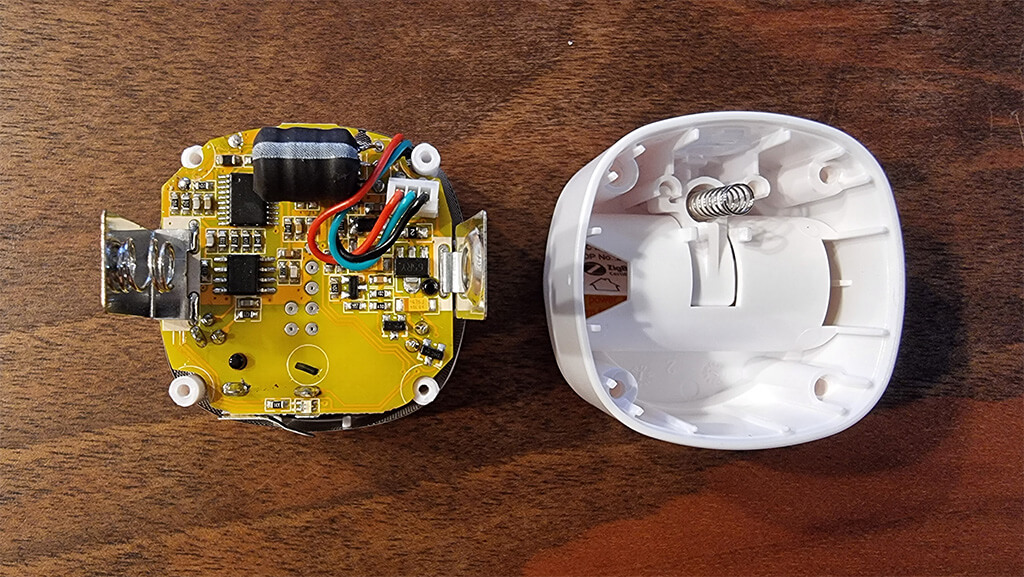
The other part of the shell can be removed by a gentle pull, and the actual smoke sensor is observed. It an in-house built Heiman Infrared Photoelectric Sensor. Inside the bottom casing, the 90db siren remains glued to the plastic.
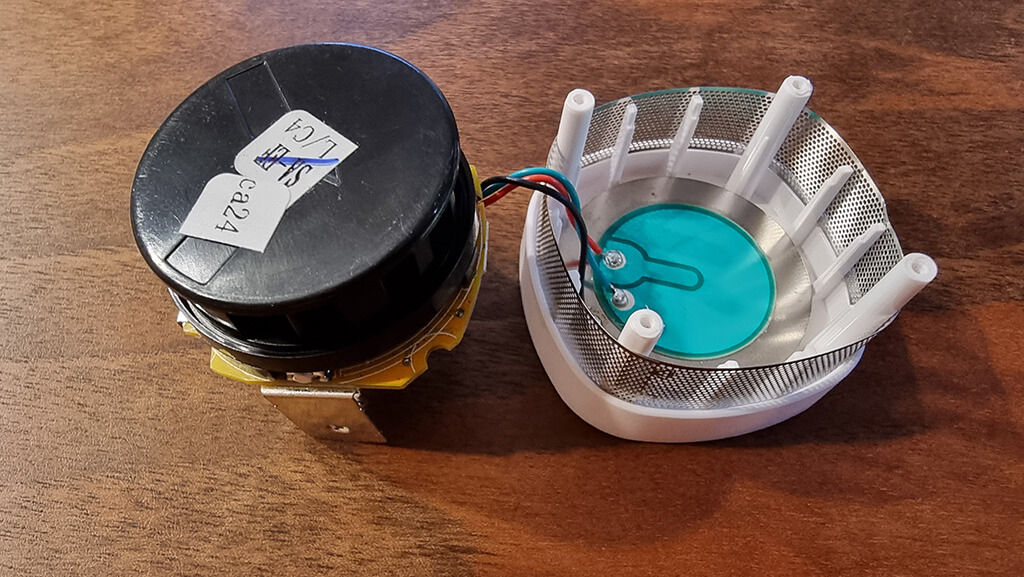
Under the smoke sensor, the ZigBee antenna is soldered. It’s a Silicon Labs EM3585 which includes an ARM® Cortex®-M3 microcontroller, 512 kB of flash, 32 kB of RAM, 0 GPIO and is available in a QFN48 package. EM3585 devices include ZigBee and Thread wireless software.
Integration Compatibility
The Heiman Smoke Detector Alarm is compatible with ZHA, ZigBee2MQTT and Deconz. It pairs easily with most coordinators, although some people have reported issues with the CC2531 stick, as it uses an outdated chip. In my case, I am testing it with the Conbee II.
To pair the smoke sensor, we use a hairpin that came in the package to press the button on the side for 2 seconds and the LED will start blinking rapidly to indicate pairing mode. If for some reason you have trouble pairing it with your coordinator, you can completely reset the sensor by holding the hairpin for 5 seconds. The LED will flash 6 times to indicate it has been reset. After this, you can repeat the pairing procedure.
ZHA
The sensor pairs seamlessly with ZHA and exposes the following entities:
- Smoke Binary Sensor
- Battery Low Binary Sensor
- Battery Percentage Sensor
- Link Quality LQI Sensor
ZigBee2MQTT
In Z2M, it is identified as model HS1SA with different ZigBee IDs depending on which version you have:
SMOK_V15, SMOK_V16, b5db59bfd81e4f1f95dc57fdbba17931, SMOK_YDLV10, SmokeSensor-N, Smoke, 319fa36e7384414a9ea62cba8f6e7626, c3442b4ac59b4ba1a83119d938f283ab, SmokeSensor-EF-3.0.
Once paired, it exposes the following entities:
- Smoke Binary Sensor
- Battery Low Binary Sensor
- Battery Percentage Sensor
- Link Quality LQI Sensor
Deconz
The sensor is also officially supported in Deconz. Some users have reported that the detector pairs fine, but does not report events at all. To fix this, after you pair it to your coordinator, you need to trigger the sensor once and all other exposes will start to report their state in time.
- Smoke Binary Sensor
- Battery Low Binary Sensor
- Battery Percentage Sensor
- Link Quality LQI Sensor
Testing
Sensor Testing
Before testing the Heiman Smoke Sensor with actual real life scenarios, the correct operation of the sensor could be checked by using the test button on the side of its shell.
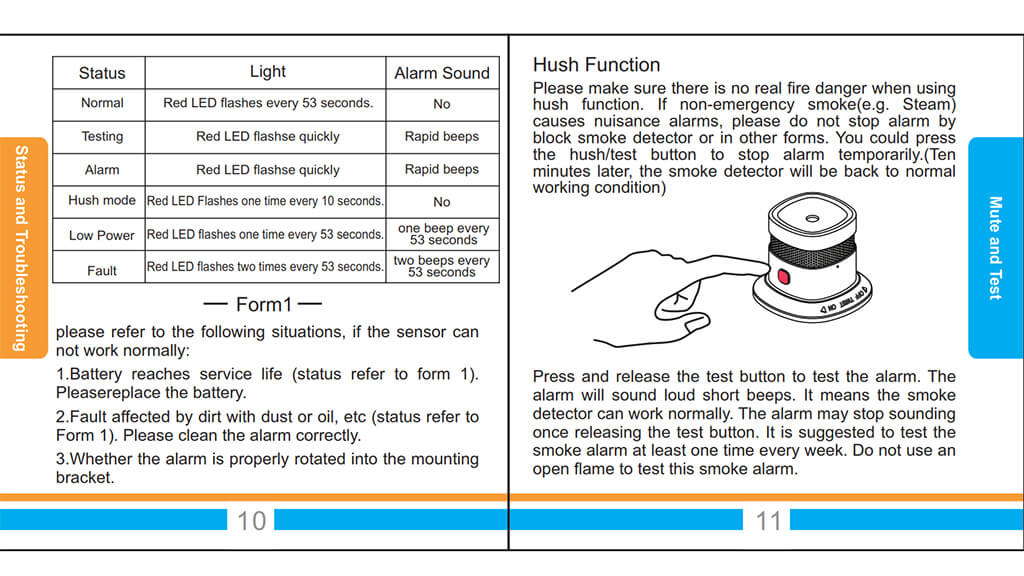
To test if the siren is in order, we can press the button which will make the LED blink rapidly and present loud beeps for several seconds. Pressing the button again will make the sensor go silent and enter “Hush mode”. This operation mode silences the siren when smoke is detected, the state is only reported through its ZigBee payload. After 10minutes, the sensor is back to normal working condition.
Heiman suggest testing the alarm once a week, but I feel this maybe a bit of an overkill. Testing maybe once a month seems more appropriate. Important thing to note though, is that air dust can pollute the sensor and make it report falsely. It will report false positives if not cleaned regularly. False positives are not a problem though, false negatives on the other hand are! If enough dust is accumulated, the sensor will not be able to detect smoke and in the case of a fire emergency it will fail to do its job. This could potentially lead to grave consequences. Try to keep its mesh clean and you will have no issues.
Real Testing
To test the sensitivity and accuracy of the sensor, I developed several real life scenarios and measured it’s response. After the first test, I turned off the siren because the sound was unbearable. I repaired the sensor 3 times to test its response from different positions and pairing paths (coordinator, 1st router, 2nd router).
Test 1: Cigarette Smoke
- Placement: Door Frame
- Paired: Directly to coordinator
- Trigger range: 1 meter (3.2 feet)
- Smoke Strength: Medium
- Response: Within 3 seconds
- Test Repeat: 10 times
- Result: Detected 10/10 times
Test 2: Cooking Bacon Smoke
- Placement: Kitchen Aspirator Frame
- Paired: Directly to coordinator
- Trigger range: 80 centimeters (2.6 feet)
- Smoke Strength: Low/Medium
- Response: Within 40 seconds
- Test Repeat: 2 times
- Result: Detected 2/2 times
Test 3: Burning Paper
- Placement: Terrace Ceiling
- Paired: Through 1st mains connected router
- Trigger range: 2 meters (6.5 feet)
- Smoke Strength: Medium/High
- Response: Within 1 minute
- Test Repeat: 4 times
- Result: Detected 4/4 times
Test 4: Burning PU Cloth
- Placement: Terrace Ceiling
- Paired: Through 1st mains connected router
- Trigger range: 2 meters (6.5 feet)
- Smoke Strength: Medium/High
- Response: Within 1 minute
- Test Repeat: 2 times
- Result: Detected 2/2 times
Test 5: Burning PVC Plastic
- Placement: Terrace Ceiling
- Paired: Through 1st mains connected router
- Trigger range: 2 meters (6.5 feet)
- Smoke Strength: Medium/High
- Response: Within 1 minute
- Test Repeat: 4 times
- Result: Detected 4/4 times
Test 6: Burning Dry Wood
- Placement: Porch Ceiling
- Paired: Through 2nd mains connected router
- Trigger range: 2.5 meters (8.2 feet)
- Smoke Strength: High
- Response: Within 1 minute
- Test Repeat: 1 time
- Result: Detected 1/1 times
I decided to burn PU cloth under the sensor because most home furniture nowadays is made from PU derivatives, and in case of a fire, this is the kind of smoke it would produce. For the PVC plastic test, I burned an old kids toy. Most of the modern household appliances are shelled in some kind of thermoplastic derivative (PVC, PP, PS, ABS), and this is the kind of smoke they would produce.
Although it delivered different results with variable time frames, it did not fail to detect smoke in any scenario.
IMPORTANT: It’s absolutely crucial that you have a robust and well-rounded ZigBee Mesh Network to ensure the correct operation of the Heiman Smoke Detector. Because this device is battery powered, it acts as an end device instead of a router. It’s placement in ceilings and corners extends the range of sending the ZigBee payload, so to make sure it does not fail in the case of an emergency, you need to solidify your ZigBee Mesh by adding as many routers as you can.
Verdict
The Heiman Smoke Sensor proved to be an excellent fire detection device you can trust. In my tests, I tried to replicate real-life scenarios of burning different materials to produce different kinds of smoke. It did not fail once to detect smoke and alert Home Assistant.
The siren it uses is rated as producing 120db at <1m and 90db at <3m with an incredibly loud and distinct sound, comparable to the Neo Tuya ZigBee 90db Alarm Siren. I had to turn it off during testing otherwise it would had deafened me.
The battery it uses has an reported life of 5 years! It can be replaced with two models: CR123A and CR17335 at 3V. Although it’s not that common and purchasable in your neighborhood hardware store, you can find it on Amazon and AliExpress for dirt cheap.
The EN14604 certificate it possesses further solidifies its case a solid product. This tells me that the Heiman Smoke Sensor is not some cheap Chinese junk, but a product that the company went out of it’s way to certify and prepare for western markets. I Intend to dig a little deeper about this company in a future article.
If you want to add the Heiman ZigBee Smoke Detector to your smart home setup, consider ordering through our affiliate links bellow.
Heiman Smoke Sensor HS1SA-E

AliExpress (Zigbee)
AliExpress (Zigbee)
AliExpress (Zigbee)
AliExpress (Z-Wave)
AliExpress (Standalone)
N/A
*N/A links will be added when available
**Only the standalone version is available on Amazon stores



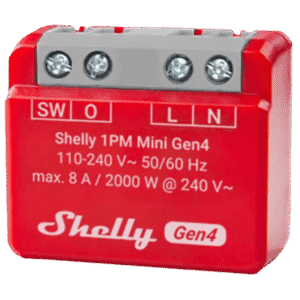








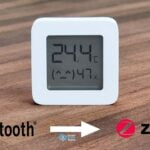
Is the alarm resetable via ZigBee?
Wow. Great review thanks a lot for that. have been wondering about these for a while now. And also thanks for taking the time to test with actual smoke, that made all the difference to me.
They say to change your smoke alarms every 10year so I still have some time left on the current ones.
I think they mean the battery, not the sensor. Or am I wrong?
I bought eight of these sensors via Aliexpress and installed them in my house here in Germany half a year ago. My Zigbee network is also installed with the Deconz stick. Everything worked out of the box – the only thing bothering me is that the battery state is still shown at 100% – which seems to be wrong as I can not believe that after half a year it did not change. At all of the eight sensors.
But I think it is still one of the best offers for having your house covered with home assistant compatible smoke sensors and not spending too much money on them.
i have a zwave fibaro smoke alarm that too holdes battery loooog on 100%. but eventually goes lower … so it doesn’t sound completely odd 👌🏼😎
There is also a different model, a completely round model.
As far as I could tell I think these are newer than the rounded square
I have 3 of those and they work perfectly in HA with ZHA.
I bought two of them, integrated via ZHA, along with Sonoff doors and IR sensors. Unfortunately, I have spurious false positives, something like once a month. And this is not dust, because the built in alarm doesn’t sound, only HA reports that the detector has seen smoke..
Especially stressful when I’m away, which is the true purpose of a connected smoke detector..
Hello Nick,
Thats very odd, in my case the sensor is very accurate. Maybe something to do with your environment? Have you tried cleaning the protective mesh?
Hi,
Thanks for answering.. Actually this is very strange, because during such a false alarm the sensor doesn’t beep. It triggers only in HA.. I tested the sensor with real smoke from a lit candle, it beeps AND triggers in HA.
I bought another one, same issue. So now I believe this is a spurious transmission error..strange as well because others sensors from Sonoff (doors, windows, IR detector) don’t have any issues.
Hey, did you find out any more about this? I have 5 of these, and one of them does give random false alarms, but like you describe, it is only triggered on Zigbee (Deconz/Conbee II), it does not make any sound, about once or twice a month.
I have now tried to re-pair it to the network and hoping that will fix it, but interested if you found the problem/solution!
If this is indeed happening like Nick describes, than its quite possibly a communication issue. I would suggest re-pairing the device through a specific router and test things out. Maybe test this with two different brands of devices you already have.
I used zigbee2mqtt and zha in my tests, not such issues at all.
Currently its running on Z2M + Sonoff ZBDongle-E and works as intended.
would love to know how it performs (sound volume wise) when the battery is under 15% or lower. That is, before you’re likely to replace it but still on its last legs. Is the sound still loud and does it go on for the same amount of time or do you really need to replace the battery before its mostly used up (20%? 25%? etc)?
Thanks for the great review and realistic testing of different materials and different places.
I assume if the zigbee network fails that the alarm still sounds regardless right? It just wouldn’t work with automations.
Can you trigger the alarm to go off as part of an automation? For example, if the kitchen alarm is set off, autmations can fire to set off the other alarms in bedrooms and other parts of the house?
Hello Chris,
The loudness of the siren has nothing to do with the battery level. Until it dies, it will sound at maximum volume. The smoke sensor will warn you by beeping of a low battery, so no need to worry beforehand but it is still good practice to test it from time to time.
Yes, the siren will still sound regardless of the state of the Zigbee network. As far as manually triggering the siren in automations, that cluster has not been exposed to HA yet.
Cheers,
SHS
Do they work in series? If one sensor detects smoke, does the other sensors also trigger the alarm? Does this functionality also work if the zigbee hub/router is down?
They can work in series, but you need to automate the process within Home Assistant or any other automation platform.
When connectivity is down, unfortunately only the sensor that detected smoke will go off.
Cheers
Can you give some direction on how to set them in series? Can’t really get it to work that one triggers the other detectors too (like fire in the kitchen, all sound alarm)
The same question (without answer) over here. 🙂
Is the alarm resetable via ZigBee (remote)?
Thank you in advance for your answer!
I don’t think it is, no. I will have to double check and get back at you.
I also have this smoke detector. It’s really sensitive and also sense the fog from the shower. Despite the sensor hanging in the hall way. So I just close the door when showering 😉
The only thing I can’t get done is resetting the alarm state. Currently two of my smoke detectors went into alarm state, and I can’t reset them. I’ve pressed the red flashing button for long periods of times, long pressed the reset button inside. removed the battery etc. Any idea
Do you know where you can find the latest firmware for this equipment?
I have recently set this up with HA, and the testing and everything is working fine. But i get random double beeps twice a day (~12hr intervals) with no explanation through signals sent for why this is happening.
Trying to find an answer to this, as the resets and everything is not changing the double beeps.
I’m experiencing the same problem…. I did recently buy 3 off these. They give 2 very loud beeps after a few hours connected to ZHA with Conbee2 in HA. Can’t find anything in the logs about it. And no it’s not the battery almost empty. I have replaced them already…. When not connected to HA they don’t have a problem…. Connected to a standalone ZigBee hub and paired to Smart life app, there’s also no problem…..
For now I have discovered that firmware version 12 have this problem and firmware version 11 doesn’t. I’ll just don’t know if it’s possible to downgrade and or how to?
It’s possible, I don’t have a newer version to be able to verify this.
Seems like the device doesn’t know it was added to a Zigbee network.
If you pair it to the Tuya hub first and than to Z2M/ZHA does the problem persist?
I have the same issue after connecting V3 with firmware 12 through ZHA to home assistant.
Any idea from other device owner how to fix this?
Regards Kai